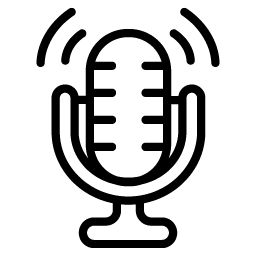It was during a motorcycle licensing class that I witnessed one of the most engaged audiences I have ever seen in my life.
Now, I’ve seen a lot of engaged audiences. I’ve watched speakers get standing ovations from a 3,000-plus crowd at a TEDx Talk. I’ve seen trainers get a room full of people to do things they would never do on their own: like singing in front of a group of strangers or participating in improv games.
What made this audience absolutely, 100% engaged was something so simple it blew my mind.
Jeff (our instructor) broke down what I call the “invisible wall.” It’s a wall that exists between every speaker and their audience. It’s there because your audience is sitting behind it and cannot truly see you or hear you unless you break down that wall for them. It’s the art of getting to “them.”
When you start in Toastmasters, your focus is on YOU: how you best speak to your audience. As you become a more experienced speaker, you learn to shift the focus onto THEM—your audience—and what they need from you.
To move from an experienced speaker to an engaging speaker, you need to understand that how you’re connecting is just as important as what you’re saying. And you can do that by breaking down the wall between speaker and audience.
The Invisible Wall
Jeff had 2½ days to get through a lot of material. We had to know the laws, safety practices, and how to physically ride a motorcycle to get our license.
Rather than giving us a traditional classroom lecture explaining everything, Jeff employed a rapid question technique, which resulted in the class fully participating in the learning. He would randomly call on us:
Jeff: “Cathey, where on the road is the greatest potential for multi-vehicle crashes?”
Cathey (searching to see what page we’re on): “At intersections?” (The class chuckles.)
Jeff: “Exactly. Jon, what is lane splitting and is it legal in Oregon?”
Jon (following along with the curriculum): “It’s the practice of sharing a lane with another vehicle, and no, it’s not legal in Oregon.”
Jeff: “That’s right. Stephen, how do you signal a right-hand turn to other vehicles in the event of your blinker not functioning?”
Stephen (at full attention because he now understands that he can be called upon at any moment): “You raise your left arm up with your palm open.”
Jeff: “Ha! You totally got it!” (The class cheers!)
What Jeff managed to do was to shift a room of about 50 of us, many of whom were on our phones, to sit up at full attention and follow along as he led us in a beautiful display of breaking down the invisible wall. He didn’t read the material or show us word-heavy slides; instead, he got us actively engaged with the material. The entire energy in the room shifted, we were all surprised to find ourselves having a great time, and almost every single one of us passed the very difficult written test.
Many speakers, including professionals and experts, rely on engaging their audience as part of their success. Inspired by my experience with Jeff, I reached out to eight professionals to gather their best tips on engaging their audiences.
 Laura Salerno Owens
Laura Salerno Owens 1 Tell great stories.
Laura Salerno Owens • trial lawyer
As a trial lawyer, I have to be persuasive, and sometimes I have to connect with people I’ve never met so they find my client’s position credible. It’s imperative that I build a relationship with my audience to establish trust. What establishes trust? Authenticity, simplicity, and creativity. All elements of a great story. I always try to set the stage with a story before diving into the data. Humans remember stories—it was the first way we learned, and I find an insightful story can persuade people from any walk of life.
 Omekongo Dibinga
Omekongo Dibinga 2 Ask powerful questions.
Omekongo Dibinga • professor of intercultural communication
I often encounter students who are more knowledgeable than me on several issues they are passionate about. Rather than pretend to be a know-it-all, I ask questions to get them thinking. Rather than telling them what to think, I invite them to analyze how they think. I might ask questions like “Does it still make sense to use terms like ‘people of color’ when white is a color too and the term jumbles groups together that don’t have that much in common?” I give the students no answer but simply provide food for thought and invite them to make their own thought-based decisions. This type of approach really gets creative juices flowing and will encourage your audience to become innovative in their own work instead of only being told what to do.
 Rebecca Armstrong
Rebecca Armstrong3 Tap into empathy.
Rebecca Armstrong • advertising executive
A critical and often overlooked factor for audience engagement, in my opinion, is empathy. That applies whether you’re delivering marketing recommendations to a small audience of business executives in a conference room or explaining how to cure cancer to an auditorium full of the world’s leading doctors and scientists. You might think your subject matter is inherently interesting but what really matters to them? Build your presentation around their needs. Think about what keeps them up at night and imagine what state of mind they might be in as they listen to you. What challenges are they facing? What do they need to make themselves successful? Are they in your audience out of interest or because a meeting invite showed up on their calendar? Have they just had lunch? Is it late Friday afternoon after a hectic week? Step into the shoes of those people with the aim of understanding their perspectives. Matter to them.
 Redray Frazier
Redray Frazier4 Build their trust.
Redray Frazier • musician
No matter how nervous I might be, I try not to show it. I want the audience to know that the stage is my home. That said, if I am nervous (which still happens), I will tell the audience and give them the reasons why. By sharing that information, a trust is being built. That always seems like a good place to start.
 Kristy Siefkin
Kristy Siefkin5 Use contrast and variety.
Kristy Siefkin • television newscaster
TV news broadcasters have to keep viewers engaged without any way to “read” our live audience members at home. There are no confused faces, crossed arms, or big smiles to let us know if our content resonates. So, we turn to contrast and variety. Think of an American Thanksgiving buffet: If you only serve a big bowl of creamy mashed potatoes, your guests leave pretty quickly. If you steadily add a small dish of zesty cranberry dip, then crunchy herb stuffing, then sweet pumpkin pie bites, guests keep circling the buffet. The same principle applies to engaging viewers on-air. We “serve” viewers a buffet of brief stories, contrasting a serious, investigative piece, delivered with intensity, with a fun human-interest story, sprinkled with banter. Just like the Thanksgiving buffet, offering bite-size stories that tap into different tastes and emotions will keep most of your guests coming back for another helping.

Hear the hosts of The Toastmasters Podcast speak with three-time Distinguished Toastmaster and international speaker Cathey Armillas. Listen for techniques to help you powerfully connect with your audience.
 Isabel Allen
Isabel Allen6 Make the personal, universal.
Isabel Allen • yoga instructor
The best way I’ve found to connect with students is to make the personal, universal. Or to make the universal, personal. I try to offer my own humanity as a route to engagement. I might share a silly story about rushing and stubbing my toe as a reminder that we could all stand to slow down and be more mindful on our yoga mats and in our lives. Or to flip it and make the universal personal, I would begin by reflecting that we live in a culture that is busy, competitive, and fast-paced. Often, we miss out on the details of life because we are rushing. Throughout class I work my way back to the anecdote or story I shared as a way to engage students with something relatable. While hopefully not everyone in class stubbed their toe earlier that day, they all know what it’s like to be rushing around and can relate to the experience of running late. The entry point to engagement is our shared humanity.
 Gary Hirsch
Gary Hirsch7 Embrace mistakes.
Gary Hirsch • improv comedian
Mistakes happen. No matter how much you plan, something unexpected and unpredictable is bound to occur. On the improv stage this fact creates magic. Imagine that Jill comes out on stage and right before she delivers her line, she trips on her shoelaces and stumbles (unexpected, unplanned). The audience holds their breath to see what will happen. Will she fall, lose her composure, apologize, start the scene again? No, she will simply see this as an offer and use it. For instance, she ties them, they trip her. Or she discovers that she is slowly losing all ability to do simple things. Or a giant snail has left a slime trail in her living room. It doesn’t matter what she does with the mistake as long as she uses it. For an audience it is exhilarating and massively engaging to see a calm and confident improviser take something unexpected and turn it into something useful. For an improviser there are no mistakes, only opportunities. Any communicator can practice this with any audience.
 Lou Radja (right)
Lou Radja (right)8 Be real. Let them be real.
Lou Radja • DEI consultant
In my role of training and consulting in diversity, equity, and inclusion, I always start with being real. I share a vulnerable story about my life and things that I do and don’t like about the situations we are working through. I then invite my audience to do the same. I encourage them to be honest about how they feel in a judgment-free zone. Because authenticity is the currency of a real engagement from an audience. They can smell inauthentic communication and they know when they are being spoken at. There’s no script for being real. You have to genuinely, authentically be real with your audience because when you are, people listen to you with their heart.
These experts use their tips to break down the invisible wall and engage their audiences. Just like Jeff, they understand that this is the secret to success, being audience-centric instead of speaker-centric.
Cathey Armillas, DTM has been a Toastmaster for 20 years. She is a Past District Director and three-time DTM. She is also a world-renowned speaker coach who runs a successful business coaching CEOs, business leaders, and TED speakers on delivering talks and sharing their stories. Find out more at catheyarmillas.com.








